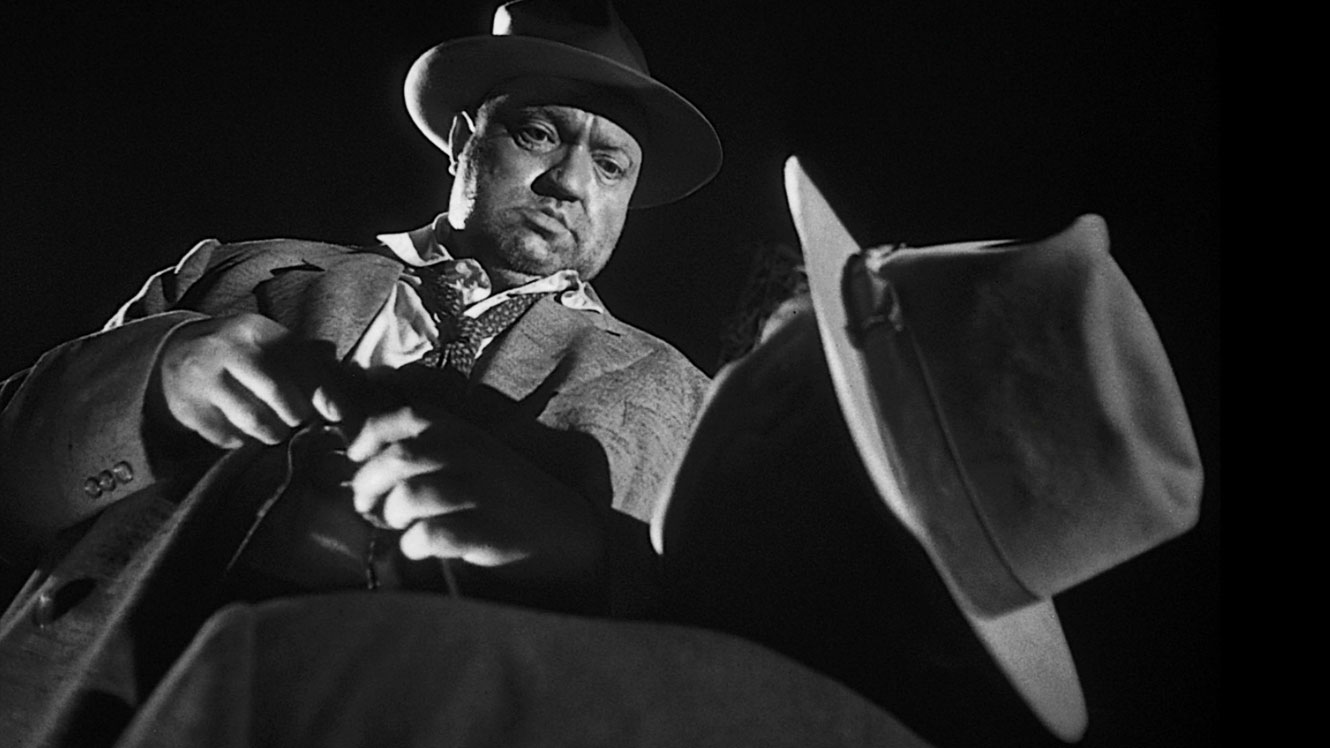Orson Welles is having a moment. While the director has never moved out of conversations about cinema and Classic Hollywood in the more than thirty years since his death, Welles’s work is experiencing a unique resurgence. Earlier this month, Welles’s final film The Other Side of the Wind premiered on Netflix alongside the new documentary They’ll Love Me When I’m Dead which tells the complicated history of his final film. With all the recent discussions surrounding his work, it’s worthwhile looking at one of his less successful films: Touch of Evil.
The tag line for Touch of Evil promises “The Story of the Strangest Vengeance Ever Planned!” The 1958 film noir delivers on that promise. The movie opens with a prolonged three minute tracking shot as a bomb is planted in a car, that car drives across the Mexican border into the United States, and then blows up. Through this shot, we meet our main character, the Mexican detective Vargas (Charlton Heston) and his wife (Janet Leigh). As different parties arrive on the crime scene, Vargas meets the US Police Captain Quinlan (Orson Welles) and the two begin to investigate the crime. Evidence emerges conveniently and suspiciously, the local gangster family gets involved, and what follows is a ticking clock of a movie that grows closer to exploding as the many sides turn on each other.
When Universal released Touch of Evil in 1958, they had re-edited and reshot Welles’s original cut, much to his dismay. He famously wrote the studio a 58-page memo detailing exactly why their edit of the movie didn’t work and the changes needed to make it work. Unfortunately, aside from his original edit, Welles never saw his film the way he wanted. The Universal cut of Touch of Evil released to unenthusiastic reviews as most people viewed it as nothing more than a confusingly plotted B-movie. The 1998 restoration sought to fulfill the wishes Welles laid out in his memo and is now the closest version of the movie to his original cut. After 40 years, his masterpiece was finally, truly available.
The story of the “strangest vengeance ever planned” is an increasingly tricky story. When Vargas falls off the wagon halfway through the film, the plot gets trickier and the stakes higher. Welles shot much of the film on real locations throughout Los Angeles which gives Touch of Evil a grittiness not often felt in other movies of the same time. Yet this same aspect gives the movie a shaky geography that can be hard to follow.
Touch of Evil is not about the plot, though. It’s a mood film wanting most desperately to affect its viewers. Welles wants to appall the audience with what comes on screen. In his 1998 review of the restoration, critic Roger Ebert said, “set aside the labyrinthine plot, and simply admire what is on screen.” Through the embellished camera movement and realism of the locations, Welles crafts an uneasiness that coincides with the tumultuous border on which the story takes place.
One stationary shot of Vargas driving a car — in contrast to other studio pictures, he appears to really be driving with no rear projection — features the background, the receding street behind him, bouncing with the break-neck speed of his car. The lines of the street converge in the distance, yet Vargas continues to move forward into the territory unknown to the audience. It’s a sequence only later remedied by a reverse shot which shows the street ahead of Vargas as he slogs forward in the car. This scene in the car is brief, yet it not only reveals much of Vargas’s character, but also summarizes the style of the film: arrhythmic and eerily real.
Touch of Evil may not be the most satisfying film noir, but its success—even on first-time viewing— flows from the layers of emotion generated in viewers. Not the least of such emotion is the tragedy of Welles’s death before the true restoration of his film. It finally became the hit he wanted it to be, forty years too late.






